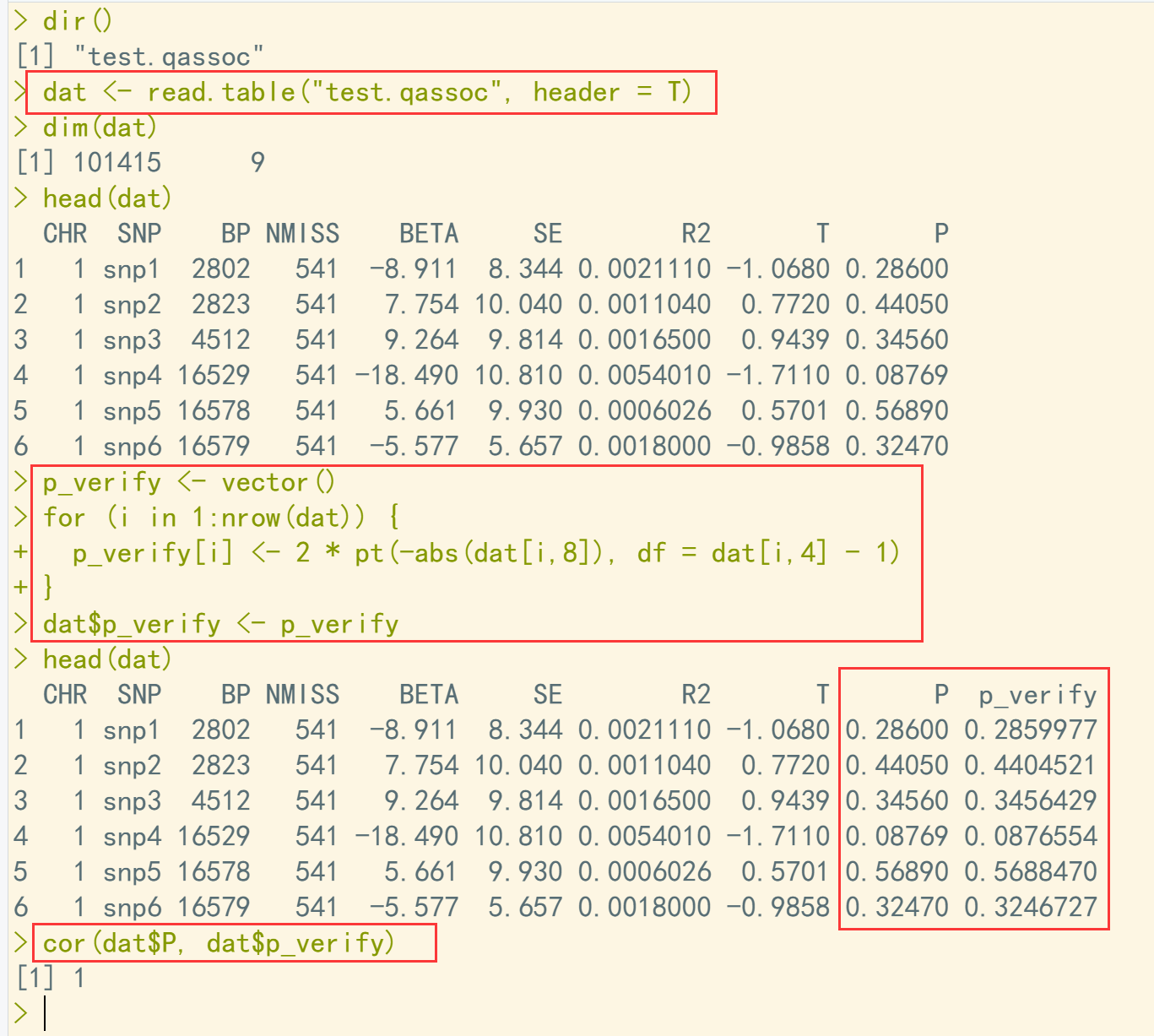plink 软件中 --assoc (或 --linear)对数量性状进行关联分析中T检验,由T值计算p值验证
001、
root@DESKTOP-1N42TVH:/home/test4# ls ## 测试数据 gwas_test.map gwas_test.ped root@DESKTOP-1N42TVH:/home/test4# plink --file gwas_test --assoc --out test 1> /dev/null ## 关联分析 root@DESKTOP-1N42TVH:/home/test4# ls gwas_test.map gwas_test.ped test.log test.qassoc root@DESKTOP-1N42TVH:/home/test4# head test.qassoc ## 查看结果文件 CHR SNP BP NMISS BETA SE R2 T P 1 snp1 2802 541 -8.911 8.344 0.002111 -1.068 0.286 1 snp2 2823 541 7.754 10.04 0.001104 0.772 0.4405 1 snp3 4512 541 9.264 9.814 0.00165 0.9439 0.3456 1 snp4 16529 541 -18.49 10.81 0.005401 -1.711 0.08769 1 snp5 16578 541 5.661 9.93 0.0006026 0.5701 0.5689 1 snp6 16579 541 -5.577 5.657 0.0018 -0.9858 0.3247 1 snp7 16635 541 2.985 8.717 0.0002176 0.3425 0.7321 1 snp8 20879 541 9.053 7.29 0.002853 1.242 0.2148 1 snp9 20908 541 9.278 6.695 0.00355 1.386 0.1664
002、R语言中进行验证
dir() dat <- read.table("test.qassoc", header = T) dim(dat) head(dat) p_verify <- vector() for (i in 1:nrow(dat)) { p_verify[i] <- 2 * pt(-abs(dat[i,8]), df = dat[i,4] - 1) ## 由T值和自由度计算p值 } dat$p_verify <- p_verify head(dat) cor(dat$P, dat$p_verify) ## 计算相关





 浙公网安备 33010602011771号
浙公网安备 33010602011771号